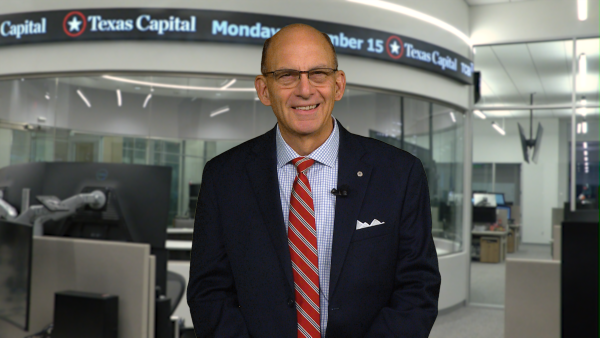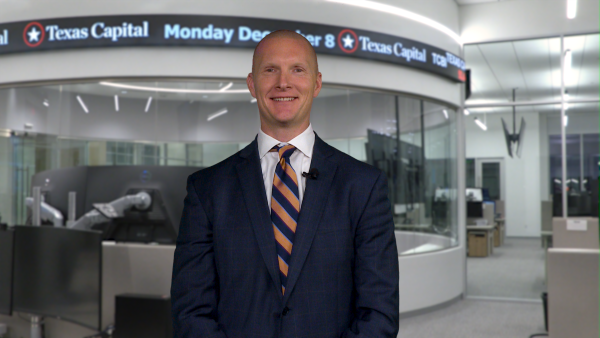Market Insights Recap — Week of September 29, 2025
Video
Hello, I'm Steve Orr, Chief Investment Officer for Texas Capital’s Private Bank.
Getting better, getting higher and pumpkin spice month. What do they mean for our portfolios? And what should we be thinking about?
So the economy, it's an unusual September for stocks. Some impressive returns for normally the worst-performing month of the year. The S&P 500 is up about 3%. And the Nasdaq nearly 5%. Investment grade bonds are about 8/10 of a percent higher for the month. The all-country world index is breaking higher. And even some of China's charts continue to improve.
So exactly what drives markets? Earnings. In order to have earnings, you have to have an economy that's not in recession. The second quarter bounced back higher than first estimated, with the economy posting a 3.8% growth instead of the original 3.3%. Consumer spending led the charge. So when you have real growth, a 3.8% plus 3% inflation, you're going to get nominal GDP expansion of 6.8% a year. That's far away from the 4% level of recession.
So let's talk about inflation. Unfortunately it's hanging around and prices are bubbling up. Now last Friday, the Fed's favorite inflation gauge registered 2.9% for the last month. That's their core reading, right on analysts' expectations. No real surprise there, but truflation’s real-time measure of U.S. inflation since those April tariffs? That's running at above a 4% annual rate. And that's well ahead of the PCE reading. And it shows that tariffs are starting to filter into retail and producer prices. So inflation's getting higher. You need some stock exposure to battle long-term inflation.
But the Fed is captivated right now by employment. And when you look at net new jobs, jobless claims that come out every Thursday, they're your leading indicator. Jobless claims are hovering near their all-time lows, around 215,000 a week. This Friday, the BLS payroll estimate should be around 50,000 and unemployment will be unchanged at 4.3%. Now, over on the demand side for jobs, the JOLTS, or Job Openings and Labor Turnover Survey, should hold steady at around 7.1 million available jobs. Labor markets roughly in balance.
And firms are also learning how to cope with tariffs. Their uncertainty, of course, induced a mild recession in manufacturing earlier in the year. But looking at the five Fed region bank surveys, new orders are turning up. And the rest of the year should improve. The Trump administration is preparing section 232 tariff investigations in case the IEEPA tariffs are struck down by the Supreme Court. Now, back in April, we were worried tariffs would average about 20% of product prices. Now they're running barely half that.
You're also going to hear a lot about government shutdowns. We've had 20 shutdowns since the days of disco, and they average about eight days in length. The longest was in 2019, at 34 days. The current head of the Office of Management and Budget, he's a seasoned pro at government spending. I think you should expect the shutdown to leave a permanent cut in the D.C. bureaucracy. The economy is usually in pretty good shape during and after shutdowns. And looking at the S&P 500 three months after these government shutdowns, S&P has posted 13 wins and seven losses. Not a bad record. Earnings for 2026 still look pretty decent. We see an economy able to support earnings growth 8 to 10% next year.
So let's wrap it up. This week, expect about 50,000 net new jobs and the unemployment rate to stay steady at 4.3%. Economy may actually be shifting from first gear up to second gear in the coming months. Senate's back in session. Voting on shutdown resolution. Shutdown odds, running about 75%. Here comes pumpkin spice month. Usually, stocks finish October slightly higher, but after a strong September like we're having, expect some consolidation. All our longer-term indicators are running green. So stay invested; 'til next time.
Connect with an expert banker.
Experience more with skilled bankers who are committed to helping you grow.


